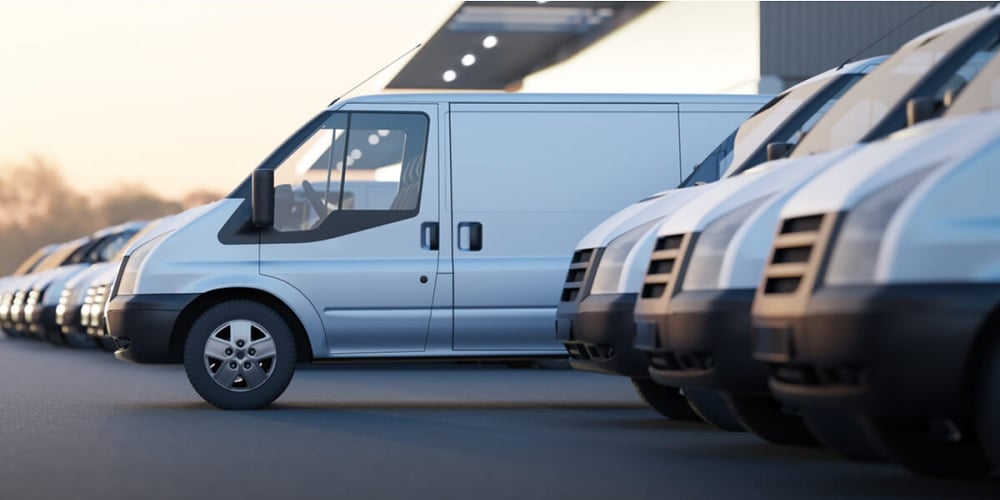Reduce fleet idling for local and state communities with data insights

According to the Department of Energy research, idling wastes about 6 billion gallons of fuel annually. Eliminating unnecessary idling would be the same as taking 5 million cars off the roadways. It adds up quickly: if each car in the United States idled only six minutes per day, this would save about 3 billion gallons of fuel and reduce fuel costs by $10 billion or more.
In more than thirty states, it’s illegal to idle excessively, and many communities have local ordinances about it. There are anti-idling laws even in cities with traffic congestion and long delays. For example, in New York City, trucks, school buses, and other vehicles can only idle for short periods, and fines can run up to $18,000. Near schools, idling for more than one minute can result in a fine.
Fleet managers can make a big difference in reducing emissions and fuel consumption. Telematics can reduce fleet vehicle idling, providing fleet managers with tracking, vehicle location, and emissions.
Common myths about idling
There's a great deal of misinformation and outdated thinking out there. Part of the process to reduce idling requires educating drivers about modern realities.
It wastes more fuel to shut down and restart than to idle
For short stops, it makes sense to turn off the vehicle to minimize fuel use and CO2 emissions. Idling for more than 10 seconds actually uses more fuel and produces more emissions than stopping and starting.
Constantly shutting off and restarting can damage the starter motor
It may have been accurate at one point, but modern starters are designed for frequent restarts, so it's not a major concern.
Idling at startup helps engine performance
Today’s engines warm up faster when at work than when idling. Idling at startup can actually decrease engine performance by stripping oil from the cylinders and pistons in modern cars.
Idling at startup is necessary to warm your car up
Idling only generates heat for the engine and does not impact cabin air. Driving will warm up your interior faster.
Using data to reduce idling and emissions
Even with education, you need hard data to make substantive change. Installing telematics devices to track idling time in vehicles provides the data for action and intervention for drivers.
The first steps are setting idling time limits for fleet vehicles and tracking compliance with telematics. The system can provide notifications to drivers with excessive idling times. GPS tracking and geofencing can also prevent extended idling in designated areas like school zones.
Advanced telematics provides real-time emissions monitoring, helping you assess individual vehicles and determine climate impact and total cost of ownership.
Analyzing telematics data
Analyzing the telematics data quantifies the costs of wasted fuel, engine wear, and emissions. This informs budgeting decisions and enables proactive maintenance scheduling when idling causes more wear. It also aids in vehicle procurement and replacement decisions, identifying inefficient vehicles for maintenance or retirement.
Justifying anti-idling requirements
Data helps justify anti-idling requirements for fleet drivers and local anti-idling ordinances. Quantifiable idling stats create buy-in from fleet drivers and residents affected by idling policies.
Deploying route optimization
GPS tracking can optimize routes, identifying areas where there is congestion or extended wait times. This helps fleet managers and dispatchers identify areas where idling occurs regularly to avoid problem spots.
Reporting and public awareness
Telematics data also plays an important role in public awareness and transparency. Using data to track idling reduction policies against emission targets helps demonstrate the value of such policies.
Some communities also combine telematics and emissions tracking with environmental monitoring by installing air-quality monitors near frequent idling locations. By showcasing positive results on emissions and air quality, you can show the impact that reducing idling can have on the community as a whole.
Sourcewell helps with procurement
Sourcewell can connect you with vendors for telematics and monitoring devices, software monitoring, third-party consulting, and resources. Using cooperative purchasing agreements and leveraging bulk buying power across 50,000 governmental agencies and educational institutions can produce significant savings.
Contacts are competitively solicited to meet procurement requirements and are ready to use at no cost to qualifying organizations. At any time, Sourcewell has hundreds of awarded contacts, giving you options to review to find the best fit for your needs.
By leveraging data and telematics, a fleet manager can identify areas for sustainability improvement by reducing a fleet's energy consumption and carbon emissions. Sourcewell contracts ensure that government entities can take the first step in supporting these initiatives. See how Sourcewell can help with your cooperative purchasing.


